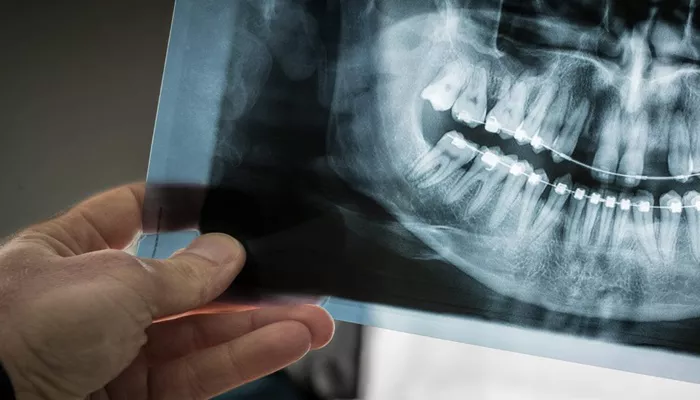Orthodontic treatment is a significant step toward achieving a straighter and healthier smile. However, many patients may not understand the importance of retainers after their braces are removed. Retainers play a crucial role in maintaining the results of orthodontic treatment. This article will explore why retainers are necessary, the different types of retainers, how to care for them, and what to expect during the retention phase.
Understanding Retainers
What Are Retainers?
Retainers are custom-made devices designed to hold your teeth in their new positions after orthodontic treatment. They are typically made of plastic or a combination of plastic and wire. Retainers come in various styles, including removable and fixed options.
Why Are Retainers Important?
After orthodontic treatment, your teeth may be prone to shifting back to their original positions. This phenomenon is known as “relapse.” Retainers help prevent this shift by keeping your teeth stable while the surrounding bone and gum tissues adjust to their new positions.
The Need for Retainers After Braces
1. Teeth Are Not Fully Stable Immediately
After braces are removed, your teeth may appear straight, but they are not yet fully stable. The bone and soft tissues around your teeth need time to adapt to their new positions. This process can take several months or even years. Retainers provide the necessary support during this adjustment period.
2. Natural Shifting of Teeth
Teeth naturally shift over time due to various factors, including:
Age: As we age, our teeth can shift due to wear and tear.
Jaw Growth: Changes in jaw structure can affect tooth alignment.
Habits: Habits like thumb sucking or teeth grinding can lead to misalignment.
Retainers help counteract these natural shifts and maintain your smile.
3. Preventing Relapse
Relapse is a common concern after orthodontic treatment. Studies have shown that without retainers, a significant percentage of patients experience some degree of relapse within the first few years after treatment. Retainers help ensure that your teeth stay in their corrected positions, reducing the risk of relapse.
4. Long-Term Oral Health
Maintaining your orthodontic results is not just about aesthetics; it is also about your overall oral health. Misaligned teeth can lead to various dental issues, including:
Tooth Decay: Crooked teeth can create hard-to-clean areas, increasing the risk of cavities.
Gum Disease: Misalignment can make it difficult to maintain proper oral hygiene, leading to gum problems.
Jaw Pain: Improper alignment may contribute to jaw discomfort or temporomandibular joint (TMJ) disorders.
Using retainers helps ensure that your teeth remain in alignment, promoting better oral health.
Types of Retainers
1. Removable Retainers
What Are Removable Retainers?
Removable retainers are designed to be taken out when eating, brushing, or flossing. They are typically made of clear plastic and can be custom-fitted to your teeth.
Benefits of Removable Retainers
Ease of Cleaning: You can easily remove them for cleaning, which helps maintain good oral hygiene.
Comfort: Many patients find removable retainers more comfortable, especially during the initial adjustment period.
Flexibility: You can take them out for special occasions or sports.
2. Fixed Retainers
What Are Fixed Retainers?
Fixed retainers are bonded to the back of your teeth, usually on the lower front teeth. They consist of a thin wire that is attached to the teeth with dental adhesive.
Benefits of Fixed Retainers
Constant Support: They provide continuous support and are less likely to be forgotten or lost.
No Compliance Needed: Since they are fixed, patients do not need to remember to wear them.
3. Which Retainer Is Right for You?
Your orthodontist will recommend the best type of retainer based on your individual needs, treatment results, and lifestyle. Some patients may benefit from a combination of both removable and fixed retainers.
Caring for Your Retainers
1. Cleaning Your Retainers
Proper care and cleaning of your retainers are essential to ensure their longevity and effectiveness. Here are some tips:
Daily Cleaning: Rinse your removable retainers with water each time you remove them. Brush them gently with a soft-bristled toothbrush and mild soap.
Avoid Hot Water: Do not use hot water, as it can warp the plastic.
Store Properly: When not in use, store your retainers in a protective case to prevent damage.
2. Regular Check-ups
Schedule regular follow-up appointments with your orthodontist to monitor the condition of your retainers. They can check for any wear and tear and make necessary adjustments.
3. Avoid Certain Foods
If you have removable retainers, avoid eating hard or sticky foods while wearing them. These foods can damage the retainers or cause them to become dislodged.
What to Expect During the Retention Phase
1. Initial Adjustment Period
When you first start wearing your retainers, you may experience some discomfort or pressure. This is normal and should subside within a few days. If the discomfort persists, contact your orthodontist for guidance.
2. Duration of Wear
Your orthodontist will provide specific instructions on how long to wear your retainers each day. Initially, you may need to wear them full-time, gradually transitioning to part-time wear over time. Compliance is crucial for maintaining your results.
3. Long-Term Commitment
Retainers are often recommended for several months to years, depending on your individual case. Some patients may need to wear their retainers indefinitely, especially if they have a history of relapse.
Conclusion
Retainers are an essential part of the orthodontic treatment process. They help maintain the results achieved during braces by preventing relapse and ensuring that your teeth remain in their corrected positions. Understanding the importance of retainers and how to care for them can significantly impact your long-term oral health and the aesthetics of your smile.
If you have completed your orthodontic treatment, be sure to follow your orthodontist’s recommendations regarding retainers. By doing so, you can enjoy the benefits of a beautiful, straight smile for years to come. Remember, the journey to a perfect smile doesn’t end with braces; it continues with proper retention.
Related topics:

